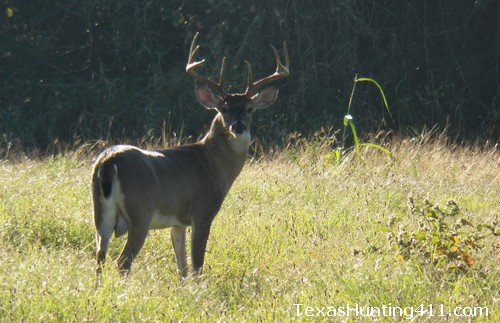Those of us that hunt white-tailed deer in Texas are lucky. We live in a great state that offers a lot of quality places to hunt. Granted most of it is privately owned, but Texas takes care of it’s landowners and our whitetail. But to be a deer, well, that is a different story indeed. It’s been a particularly tough run for all wildlife the past few years because habitat conditions have been fair to poor, with most towards the latter.
A lack of rain wreaks havoc when it comes to deer foods, especially forb production. Generally speaking, forb availability and quality is high during spring and early summer and declines as summer carries on. This year, many areas saw very little forb production during the spring, though there were some parts of Texas that got some much needed rain recently.
It’s mid-May ans that means fawns. They are already “dropping” in some areas. The fawning period is a critical time does producing and raising fawns, when protein requirements are relatively high. Lack of suitable-quality forage probably will not have a large impact on adult survival, but if does do not have adequate forage, fawn survival and recruitment will be negatively impacted.

To make matters worse, dry weather means a reduction in herbaceous growth that results in reduced fawning cover, which equates to decreased fawn survival because of increased predation. It’s tough to be a white-tailed deer, young or old.
For properties that conduct annual surveys to estimate deer numbers, drought means fewer tick marks on the datasheet and lower deer populations. Yes, a lack of fawn survival and recruitment can have significant management implications on properties. This makes harvest recommendations all the more important. Harvest too many and the population may be shot into a “hole.” Shoot too few and the tough conditions will be exacerbated.
Ranch owners and managers must seriously consider deer numbers at all times, but especially when it’s dry; especially when it’s year after year of dry. Although deer hunting regulations change slowly in Texas, deer harvest is something that varies from year to year on managed ranches. A drought year may mean less harvest overall even though poor range conditions actually make achieving harvest quotas easier (since deer readily respond to bait).
There is no doubt that dry weather and poor habitat conditions impact deer populations, but the impact it may have varies from area to area. If you’re interested in improving the deer found on your property or lease then get more involved with management, start counting deer annually, estimate fawn production and herd size and use the hunting season for both fun and to help the herd as well as the habitat.